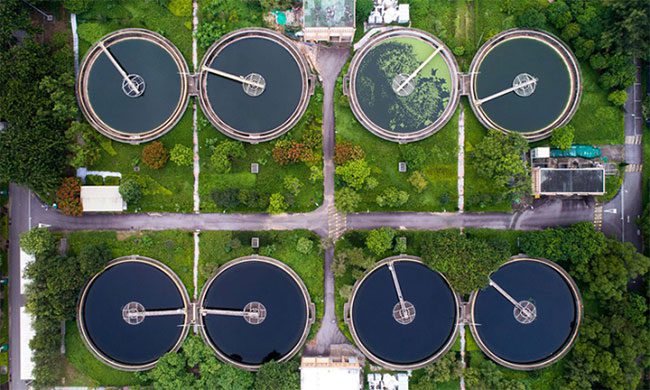Researchers at Stanford University are developing an anaerobic wastewater treatment process to produce clean water and valuable resources.
In a world where one in four people lacks access to clean water, most of whom live in poverty, scientists are continuously searching for innovative solutions to supplement the water supply for humanity.
A mechanism known as anaerobic filtration has garnered significant attention because it uses very little energy to convert wastewater into a consumable form. However, there is a problem: while purifying water, the anaerobic filtration process tends to generate hazardous byproducts related to sulfide (an inorganic ion of sulfur). These substances are extremely harmful to human health and the environment.
According to the Centers for Disease Control and Prevention (CDC), inhaling hydrogen sulfide can lead to symptoms such as shortness of breath, tremors, eye and skin irritation, loss of consciousness, and even death at high concentrations. This means that workers at wastewater treatment plants face numerous health risks.

Anaerobic wastewater treatment requires little energy but often produces hazardous byproducts. (Photo: CNET)
To address this urgent situation, in a paper published on March 2 in the journal ES&T Engineering, researchers from Stanford University revealed a new anaerobic treatment process that not only converts toxic sulfides in wastewater into safe compounds but also generates high-value resources for technology and agriculture production.
Typically, scientists try to tackle the sulfide problem by using certain chemicals to separate sulfur derivatives into non-toxic components. However, this often corrodes the pipes of the filtration system, reducing the overall efficiency of clean water production.
In the new method, the research team addresses sulfide by employing a technique called electrochemical sulfur oxidation. “The process we are implementing converts sulfides in wastewater into more valuable substances, such as sulfuric acid, which can be used in various manufacturing processes or as fertilizers,” described lead author Xiaohan Shao, a PhD candidate in Civil and Environmental Engineering at Stanford University.
Essentially, this electrochemical system provides researchers with the option to transform sulfide into other sulfur derivatives, thereby completely eliminating hazardous chemicals from the anaerobic filtration process. According to the research team, this process requires very little energy and can be entirely powered by renewable sources, making it applicable for entire cities.
“We can integrate our process into other advanced wastewater treatment technologies to bridge the gap between wastewater and drinking water,” Shao added. “We hope this research will help accelerate the adoption of pollution mitigation technologies, recover valuable resources, and produce drinking water simultaneously.”


















































